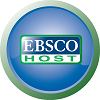Import substitution of elevator equipment in public procurements: problems and directions of stimulation
Abstract
The problem of import substitution is relevant for any country, taken into account the requirements of its economic self-sufficiency, independence on the situation at the international markets and on geopolitical changes. For Ukraine in the state of full-scale war, this task is important from the viewpoints of economic resilience and security. For this reason, the Government determined the substitution of import components in public procurements as one of the priorities of its activity. Solving this problem will be important for the projects associated with the procurement for the recovery of infrastructure in post-war period.
The sector of elevator equipment production has a significant industrial potential for the post-war recovery of infrastructure in Ukraine. Extension of industrial capacity of this segment of machine building in order to cover the domestic market requirements in post-war recovery period will enable new job creation and will provide a multiplicative effect based on the development of complementary suppliers of production components. However, a number of problems prevents Ukrainian elevator equipment producers from winning in public procurements.
The goal of the article is to substantiate the reasonability and to determine the directions and stimulating measures for elevator equipment import substitution in public procurements in Ukraine.
The market of elevator equipment of Ukraine has been analyzed. The capacity of Ukrainian elevator equipment producers to compete at the domestic market has been assessed based on price, warranty terms, cost of warranty service, and quality of equipment.
Public procurement of elevator equipment and maintenance services in “Prozorro” system has been studied. It was found that about 70 % of public procurements of elevator equipment account for the purchases of imported equipment from Turkey and China. The problems of domestic producers of elevator equipment preventing them from winning the public procurement have been explained.
The multiplicative effect from the increase of public procurements of elevator equipment from national producers has been assessed. This proves the reasonability to stimulate import substitution of elevator equipment in public procurements. The directions and measures of elevator equipment import substitution stimulation in public procurements in Ukraine have been suggested.
Keywords
Full Text:

PDF (Українська)
References
Guba, M. (2015). Import substitution in the food market development support system. Global and national problems of economic. Electronic scientific publication, 7, pp. 117-121 [in Ukrainian].
Dunaev, I., & Kiryukhin, A. (2011). Development of import substitution programs at the stage of structural modernization of the economy of the border region of Ukraine. Ensuring the sustainable development of the economy at the macro and macro levels (pp. 14-16). Odesa: Economic center experiment and solution [in Ukrainian].
Zhalilo, Ya., & Gatsko, V. (2006). Problems of forming modern principles of import substitution policy in Ukraine. Economic policy, 1. Retrieved from http://www.niisp.org/vydanna/panorama/issue.php?s=epol2&issue=2006_1 [in Ukrainian].
Zhalilo, Ya., Sobkevich, O., Sukhorukov A. and etc. (2012). Priorities of import substitution in the strategy of modernization of Ukrainian industry. Analytical report. In Ya. Zhalilo (Ed.). Kyiv: NISD. [in Ukrainian].
Zaliznyak, V. (2019). Import substitution in the food security system of Ukraine. Public administration: improvement and development. Electronic edition, 1. DOI: https://doi.org/10.32702/2307-2156-2019.1.29 [in Ukrainian].
Kundytsky, O. (2015). Strategy of state regulation of import substitution in the agricultural sector of Ukraine. International Humanitarian University Herald, 10, рp. 60-62. [in Ukrainian].
Lupak, R. (2018). State policy of import substitution in the system of ensuring economic security of Ukraine: priorities and implementation tools: monograph. Lviv. NNVK "ATB" publishing house. [in Ukrainian].
Ostashko, T. Possibilities and limitations of the application of protective measures for agricultural products within the framework of the WTO. Economist, 9, pp. 4-6 [in Ukrainian].
Pazizina, S. (2017). Import substitution as a factor in changes in the structure of production and foreign trade of Ukraine. Journal of European Economy, 11 (2), pp. 199-214 [in Ukrainian].
Ministry of Energy and Environmental Protection. Association of Gas Production Companies of Ukraine (2019). Guide to import substitution for Ukraine. Oil and gas. Retrieved from https://www.geo.gov.ua/wp-content/uploads/presentations/ukr/posibnik-importozamishhennya-dlya-ukraini.pdf [in Ukrainian].
Skrypnyk, N., & Sinyagovska, A. (2022). Implementation of the import substitution strategy in the modern realities of geoeconomic instability. Market Infrastructure. Electronic professional scientific and practical journal, 66, рр. 35-39 [in Ukrainian].
Sobkevich, O., & Shevchenko, A. (2011). Regarding the financial mechanisms of structural changes in the industrial sector. Analytical note. Retrieved from http://www.niss.gov.ua/articles/460/ [in Ukrainian].
Tsap, M., Palinchak, M., & Steblak, D. (2018). Essential characteristics of the import substitution process and its role in socio-economic development. Scientific Bulletin of Uzhhorod University, Series "Economics", 18, 3, рр. 118-122. [in Ukrainian].
Chepelev, M. (2012). Evaluation of multiplier effects for the branches of the economy of Ukraine: a retrospective analysis based on the "Input-output" tables. Economist, 11, рр. 74-76 [in Ukrainian].
Shevchenko, A. (2023). Prospects for import substitution of Russian and Belarusian goods in the domestic market of Ukraine. National Institute of Strategic Studies. Center for Economic and Social Research. Expert analytics. Retrieved from https://niss.gov.ua/doslidzhennya/ekonomika/perspektyvy-importozamishchennya-rosiyskykh-ta-biloruskykh-tovariv-na [in Ukrainian].
Sholomytskyi, Yu., Daysan, I., & Sholomyts-ka, O. and etc. (2021). Evaluation of the economic effects of the "Major construction" program in 2020-2023. Yu. Sholomytskyi, I. Deysan, O. Sholomytska, A. Onoprienko, N. Shapoval. Kyiv. School of Economics. Kyiv, 56 p. [in Ukrainian].
Holland, B., Johnson, S, Rush, J., Wong, A., & Orlik, T. (2022, February 25). How War in Ukraine Threatens the World’s Economic Recovery. Bloomberg Economic. pp. 1-5. Retrieved from https://www.bloomberg.com/news/features/2022-02-25/war-in-ukraine-howthe-ukraine-russia-conflict-could-impact-the-globaleconomy
Valero, J., Seputyte, M., & Nardelli, A. (2022, May 31). EU Leaders Back Push to Ban Most Russia Oil Over Putin’s War. Bloomberg Economic. pp. 1-4. Retrieved from https://www.bloomberg.com/news/articles/2022-05-30/eu-leaders-back-push-to-ban-some-russian-oil-over-putin-s-war
DOI: https://doi.org/10.15407/econindustry2024.03.022
Refbacks
- There are currently no refbacks.









